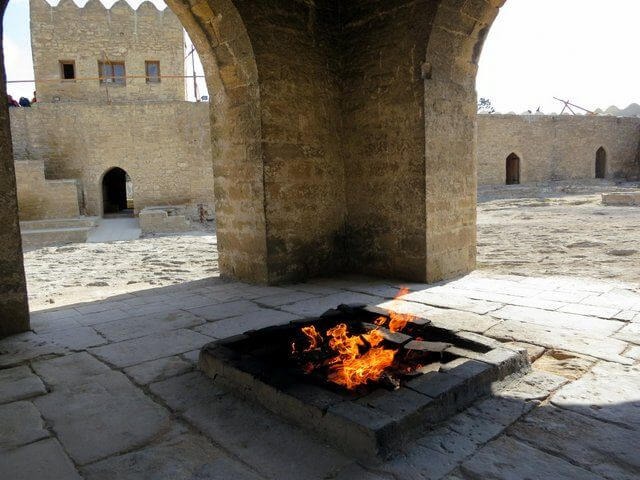
Inside Ateshgah of Baku
One of the more unique and popular tourist sites in Baku is the Zoroastrian Fire worshipping temple, but the journey there takes you though much of Baku’s recent oil history.
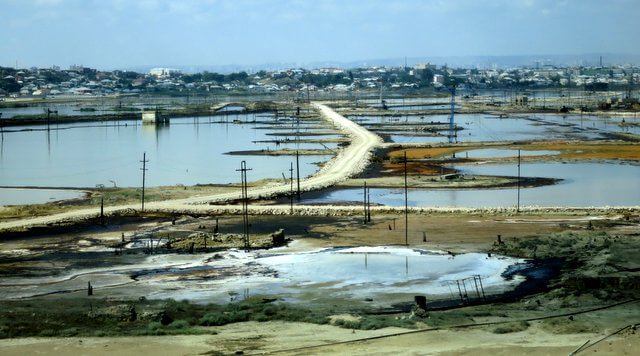
Road through the Romanov Oil Fields
Romanov Oil Fields
Marco Polo described the oil fields of the Absheron peninsula around 800 years ago:
“Near the Georgian border there is a spring from which gushes a stream of oil, in such abundance that a hundred ships may load there at once. This oil is not good to eat; but it is good for burning and as a salve for men and camels affected with itch or scab. Men come from a long distance to fetch this oil, and in all the neighbourhood no other oil is burnt but this.” – The Travels of Marco Polo
Today, despite the industrialised nature of the oil extraction, this area still has crude oil just rising to the surface and forming acrid pools amongst the white salt flats.
Driving through the Romanov Oil Fields, there are still hundreds of nodding donkeys (or what I now know are called Pumpjacks) of various sizes.
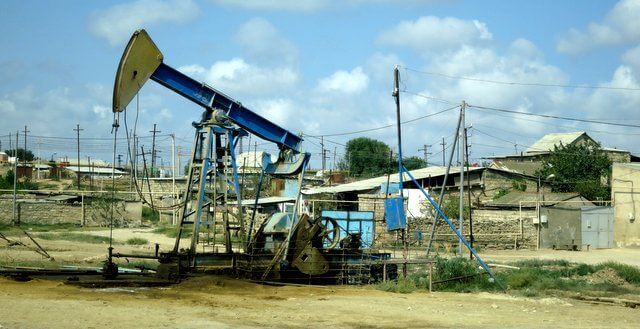
Pumpjack
All this is overlooked by the Ramana Tower, another UNESCO World Heritage Site:
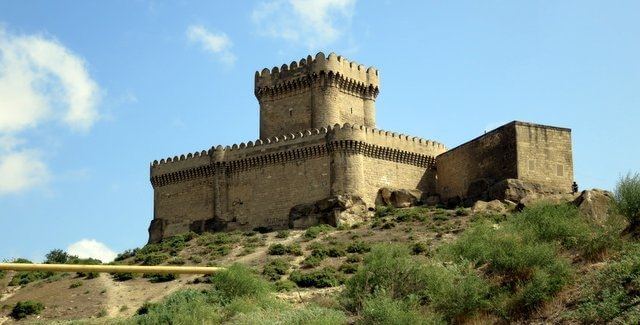
Ramana Tower
Ateshgah of Baku – The Fire Temple
The entire area around the Fire Temple has completely changed since last time I was there. New residential home surround the area and a railroad cuts close to the main entrance.
Unlike last time I was here, we didn’t catch the groundskeeper turning on the gas pipes and lighting the flames. This time we maintained the illusion that the temple is still burning the same natural gases seen by early Byzantine travellers in the region.
Inside there’s a lot of work still going on and many of the outer rooms are closed to the public. Thankfully the central structure is still working and we could see the main point or worship.
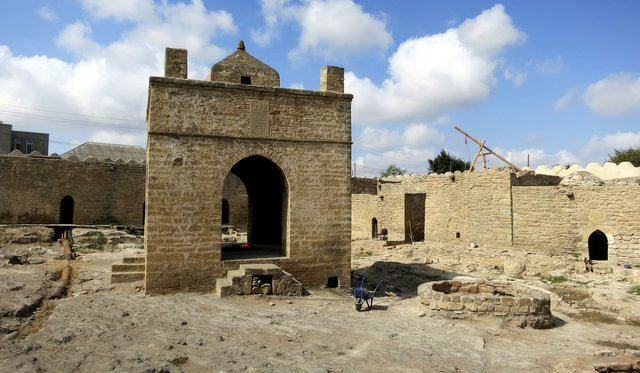
Zoroastrian Fire Temple – thick castle walls contain a number of rooms
Like the Gobustan Rock Carvings, this time was far more interesting as we had a decent guide. Just as interesting was watching the elegance with which one of the experienced journalists coaxed the guide to give a live interview to camera. You can see the interview over at TravelMole, and learn a little more of the history of Zoroastrian fire worship, and how this led to Azerbaijan coming to be known as Land of the Eternal Fire.
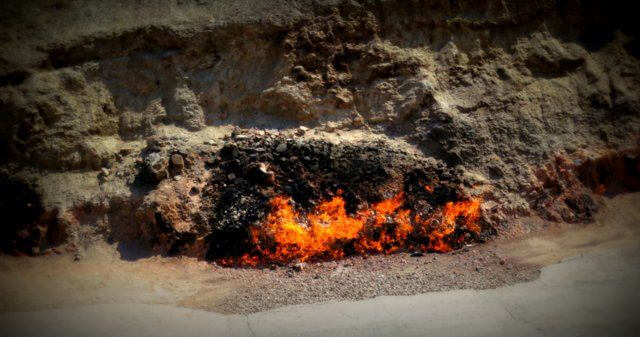
Yanar Dagh
Yanar Dagh, the Burning Mountain
Not far from the fire temple is a site called Yanar Dagh, where natural gas still seeps up through the ground. It’s helpfully been set on fire, so it looks like the ground is burning.
Mud Volcanoes
The Caspian coastline of Azerbaijan also has nearly 400 mud volcanoes, more than half the total worldwide. The natural gas filters up through the pools of grey mud, creating languorous bubbles.
Be careful there and don’t wear good shoes – it’s very easy to step on the pale grey crust and watch your foot disappear into the sticky mud beneath…
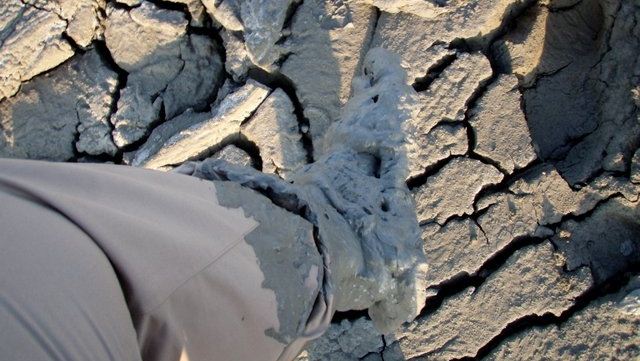
…and that would be silly.
These mud volcanoes occasionally explode, throwing mud and flames hundreds of metres into the air. That won’t do much good for your shoes either.
This trip was arranged by the Azerbaijan Tourist Board, as part of the United Nations World Tourism Organisation Silk Road Conference.






Pingback: @escapeartistes
Pingback: @edventuremama
Pingback: Dr. Jessica Voigts (@WanderingEds)
Very cool. Glad to be reading your posts. I’ve wanted to visit Azerbaijan for quite some time and though I’m not sure I’ll ever be able to, your photos give me more inspiration to try. Also good to see someone writing on such an under-rated destination.
It’s a beautiful place, but wait for the food posts to start – it’s amazing there.
Oh, I’d love to hear more about the food in Azerbaijan! Will be waiting patiently :).
Foods? oh my! Awaiting for your next post! I have never see Mud Volcanoes before! I cannot imagine..
Pingback: @MarkSmithBvs
Pingback: Steve Whitty (@stevo120665)
Pingback: Micki & Charles (@BarefootNomads)
The mud volcanoes are amazing. But the shot of the oil pump in the rustic village is poignant.
Pingback: @wanderplex
Pingback: Debbie Kelly (@debbytravels)
Pingback: Crorys Banbridge (@crorysoutdoor)
Pingback: @ChandruSkywalk
Pingback: @rachelmcclellan
Weird to see the tower looking over an oil field of all things…
The image of the oil pumpjack machines there made me sad — so ugly and I know they’re really noisy too! But I guess you gotta help your economy wherever you are. Let’s hear about teh culinary delights next. 🙂
Pingback: @robsullivan1973
What a wonderful post! I’m so glad that you found Azerbaijan interesting and that you learned so much about our history!